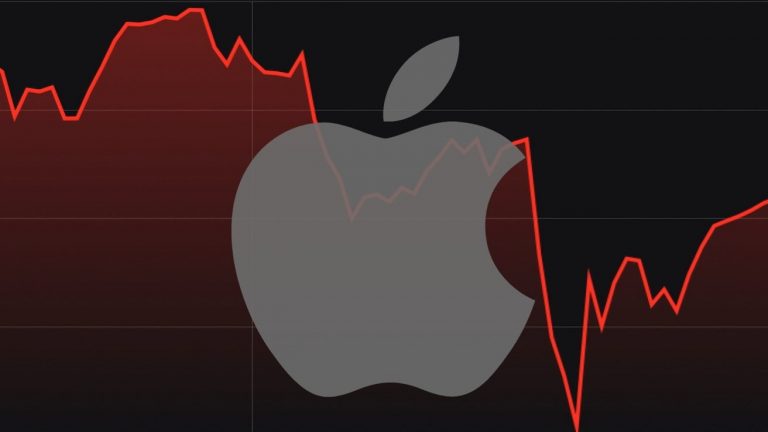
Apple’s stock dropped 4% in premarket trading on May 23, 2025, after President Donald Trump threatened a 25% tariff on iPhones not manufactured in the U.S., as stated in a Truth Social post. Trump emphasized domestic production, saying he expects Apple to make iPhones in the U.S. rather than in countries like India or China. This follows earlier tariffs, with China facing a 30% levy (down from 145%) and India at 10%, impacting Apple’s supply chain, which relies heavily on Chinese manufacturing (90% of iPhones) and increasingly on India and Vietnam.
Apple has been shifting production, with most U.S.-bound iPhones now made in India and other devices like iPads and Apple Watches produced in Vietnam, aiming to mitigate tariff costs estimated at $900 million this quarter. Despite exemptions for smartphones and electronics announced in April, the renewed tariff threat has rattled investors, contributing to a 19.4% year-to-date stock decline. Analysts suggest Apple may delay price hikes until the iPhone 17 launch, but a potential 17-18% price increase could hurt demand in a competitive smartphone market.
Moving production to the U.S. is seen as unlikely in the short term due to complex supply chains and high costs, potentially tripling iPhone prices to $3,500 if fully domestic. The broader market also saw declines, with Nasdaq, Dow Jones, and S&P 500 futures slipping 0.4%, 0.3%, and 0.3%, respectively.
Register for Tekedia Mini-MBA edition 19 (Feb 9 – May 2, 2026): big discounts for early bird.
Tekedia AI in Business Masterclass opens registrations.
Join Tekedia Capital Syndicate and co-invest in great global startups.
Register for Tekedia AI Lab: From Technical Design to Deployment (next edition begins Jan 24 2026).
The 4% drop in Apple’s stock following Trump’s tariff threat on foreign-made iPhones carries significant implications for Apple, the tech industry, and the broader economy, while also highlighting a deepening divide in economic policy, consumer impact, and global trade dynamics. Apple’s reliance on China (90% of iPhone production) and growing manufacturing in India and Vietnam makes it vulnerable to tariffs.
A 25% tariff could add $900 million in costs this quarter alone, potentially forcing price hikes of 17-18% for consumers, which could reduce demand in a competitive smartphone market. Moving manufacturing to the U.S. is impractical short-term due to complex supply chains, lack of skilled labor, and higher costs. Estimates suggest U.S.-made iPhones could cost $3,500, eroding Apple’s market share.
Apple may absorb some costs to delay price increases until the iPhone 17 launch, but sustained tariffs could squeeze margins, especially if competitors like Samsung, with more diversified production, adapt faster. The tariff threat extends beyond Apple, impacting other tech giants like Nvidia, Microsoft, and chipmakers (e.g., Qualcomm, Broadcom) reliant on Asian manufacturing. This contributed to a 0.4% drop in Nasdaq futures.
Higher costs could divert funds from R&D, slowing innovation in AI, semiconductors, and other tech sectors critical to U.S. competitiveness. Higher iPhone prices could dampen consumer spending, especially among price-sensitive buyers, potentially slowing economic growth. The broader market saw declines (Dow -0.3%, S&P 500 -0.3%), reflecting investor concerns about trade wars and inflation. Tariffs could exacerbate inflationary pressures, complicating Federal Reserve rate decisions.
Tariffs risk retaliatory measures from China and India, escalating trade tensions and disrupting global supply chains already strained by geopolitical issues. Trump’s tariff aligns with his “America First” policy to boost U.S. jobs, but critics argue it overlooks the complexity of global supply chains and could lead to job losses in other sectors if consumer spending falls. Uncertainty around tariff implementation and exemptions (smartphones were previously exempt) fuels market instability, as seen in Apple’s 19.4% year-to-date stock decline.
The tariff threat underscores a broader divide in economic philosophy and stakeholder interests. Globalists argue that tariffs disrupt efficient supply chains, raise costs, and hurt consumers. Apple’s globalized model relies on cost-effective manufacturing in Asia, and tariffs could undermine its competitiveness. Protectionists support Trump’s push for domestic production to create U.S. jobs and reduce reliance on foreign supply chains, citing national security and economic sovereignty.
Consumers face higher prices or reduced access to affordable tech, disproportionately affecting lower-income households. A $3,500 iPhone would make premium devices a luxury, widening inequality in tech access. Corporations must navigate cost increases, supply chain shifts, or lobbying for exemptions, diverting focus from innovation to compliance.
Tariffs aim to boost domestic manufacturing but risk alienating allies like India and escalating tensions with China, which could retaliate with tariffs on U.S. goods (e.g., agriculture, tech). Countries like China and India, key to Apple’s supply chain, may face economic fallout, with India’s iPhone exports to the U.S. (a growing hub) particularly at risk. Higher prices, market volatility, and supply chain disruptions could dominate 2025, especially if tariffs are implemented without exemptions.
Proponents argue tariffs could incentivize U.S. manufacturing over decades, but critics warn of entrenched inflation and reduced global competitiveness. The tariff threat on foreign-made iPhones exposes Apple to significant financial and operational risks, with ripple effects across tech, consumers, and global trade.
It amplifies a divide between protectionist and globalist visions, pitting short-term economic pain against long-term strategic goals. Apple’s response—whether absorbing costs, raising prices, or accelerating supply chain diversification—will shape its trajectory, while the broader debate on trade policy will influence U.S. economic and geopolitical standing.



